By Nchumbonga George Lekelefac
Point 3: The difference between Father John Egbulefu and Thomas Aquinas in the Practice of Theology
The difference between Father John Egbulefu and Thomas with regard to the practice of Christian Theology, is visible from three particular points of view: the immediate addressee of the Theology, the proper metaempirico-scientific means used in speculative Theology, and the presence or absence of Technical Theology
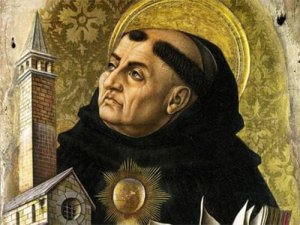
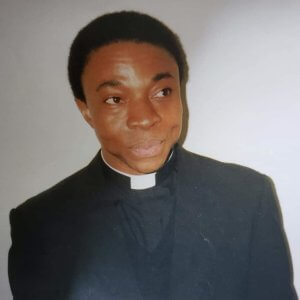
Point 3a): Difference from the point of view of the immediate addressee of the Theology
1) The difference between the theology done by Thomas Aquinas in the medieval period and the theology done by us in the contemporary period is unavoidable, already from the fact that we are expected by the Second Vatican Council – in her call for Aggiornamento in togetherness with Ressourcement and Approfondimento – to be theologians in and of our own time, but all the time remaining valid for all times in most of the thoughts and ideas that we are generating from our speculative explorations of the revealed supernatural truths of the Christian faith; in this way we shall continue to have affinity and resemblance to Thomas Aquinas who was in and of his own time but is, certainly in most of his thoughts and ideas, valid for all times.
2) To vest the point in other terms: We as thinkers of today ought to do the same thing (idem) that Thomas did, namely reasoning on those believed truths of the Word of God found in the deposit of the truths of the Christian faith as in the togetherness of Scripture and Tradition, on which we focus our mind and heart and intellect.
3) Such concentrated focus on the truths of the Word of God is like the contemplating of that image or reflex of the face of the Sun sunken into the limpid and sparkling, crystal-clear mirror-like water-masse, but we have to do it diversely (aliter) from Thomas, i.e. in a diverse manner from how he did it.
We have got to do Theology today like Christians and citizens of our nations living in the twenty-first century whose way of reasoning and of doing is diverse from that of the humans who lived in the thirteenth century in which Thomas (1225 -1274) lived with them.
Our way of doing Christian Theology today that Thomas Aquinas did in his days has inevitably got to be diverse from the way he did it, because in spite of our recognizing him as a model that lived long ago, we have got at the same time to be updated in our thinking, if our thoughts and ideas are to make sense to the man of today.
The contemporary period of globalization is fraught with a bad as the separatistic spirit and secularistic mentality in the midst of a good as the technico-productive, technoscientific thinking, while the medieval period of popularization was fraught with a bad as the superstitious spirit and magical mentality required to be overpowered and overthrown and replaced by the newly introduced metaempirico-scientific, metaphysico-ontological thinking.
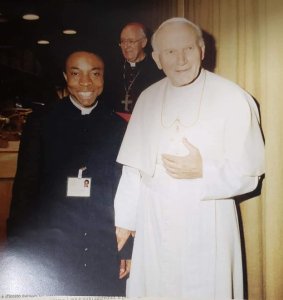
Thus, we have got to give newer reasons and explanations proximately to the man of today and remotely to the man of tomorrow for the same supernatural truths of our common Christian faith with Thomas but giving them thereby in a diverse way from how he gave them, we have to give from our own time reasons that are distinct from but united with the older reasons and explanations he gave in his own days.
Point 3b): The difference from the point of view of the proper metaempirico-scientific means used: difference in the use of two contrary arms of metaempirical Science in Speculative Theology
1) One of the most significant differences in spite of unity between St. Thomas Aquinas and us in the practice of Theology is the difference between his own speculative Theology and our own, which in turn lies in the difference between his way of doing theological speculation and our own way of doing it. Theological speculation in general consists in reasoning on the believed truths of the Word of God in the mirror (speculum) called the sacred deposit of (the supernatural truths of the Christian) faith (depositum veritatum fidei Christianae), a deposit consisting in the togetherness of Scripture and Tradition. And such reasoning activity is like contemplating the image or reflex of the face of the Sun in a limpid, sparkling, crystal-clear, mirror-like water-masse. This type of speculation is done by us today in a way diverse from – in the sense of being contrary but not contradictory, opposite but not opposed to – how Thomas did it those days.
2) Our point of departure is an aggregate of four points none of which we believe that Thomas would dispute.
2a) The first point (the hermeneutical Principle) is that a reality must have a structure, for it to be understandable; hence that an amorphous, formless, shapeless, reality defies understanding, because the structure of a reality is the principle of the intelligibility of that reality.
2b) The second point is that in order to make a reality intelligible to fellow minds and spirits one must first structure that reality and structure it in fact according to the mind of the original maker of that reality, because to understand the product of a fellow mind and spirit it is wise to consult him for information about how he put it all together, how he constructed it, why which part of the reality is there where it is in the system of that reality and why each part is so as it is, hence to give information about the place and role of each part within the system of the structure and function – the system of the diverse components and of the mechanism – of the entire reality, hence to give indications or instructions about how to handle, use and conserve that reality as a good.
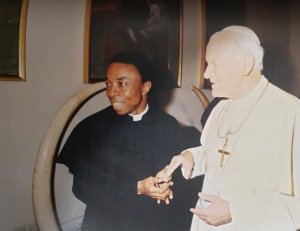
2c) The third point is that there is nothing totally new under the sun, that every new product made by Man can only be the result of a conscious or unconscious, but inevitably and indispensably, spirit-guided human imitation of a certain divine model that has attracted – caught the attention of – the human mind and spirit.
2d) The fourth as the last and most decisive point is that there are three levels of beings in the descending order of first the supernatural on the topmost level, there above, then the metaempirical at the middle, and then the empirical at the bottom, here below, and that the road of the empirical to the supernatural and of the supernatural to the empirical passes through the metaempirical, wherefore an intermediary role is given to the metaempirical to play as the mediator between the empirical and the supernatural, wherefore again it is legitimate to bring the Supernatural to the empirical through the metaempirical, hence to use the metaempirical to explain the Supernatural truths to persons living in the empirical world, and that means, in the case of scientific explanations of the Supernatural, to use the metaempirical Sciences to explain the Supernatural truths to persons living the empirical world. And since the left arm of the family of the Metaempirical Sciences is constituted by the Metaphysical Sciences (which basically comprise General Metaphysics, and Special Metaphysics, called Ontology), while the right arm is constituted by the Exact Sciences (which basically comprise Logic and Mathematics, mathematics that in turn comprises geometry, arithmetic and algebra) it follows not only to use both the Metaphysical Sciences and the Exact Sciences to explain the Supernatural Truths to humanity of all times on the earth planet, producing thereby a scientific explanation that is valid for the peoples of all places and all times, people of all nations and all generations at all times, in this terrestrial planet, but also to use either of the two Arms according to the demand of the places and times, namely:
1) to use the Metaphysical Arm in times and places characterized by magical and superstitious thinking to offer to the people a place-pertinent and time-relevant scientific explanation of the Supernatural truths, or;
2) to use the Exact Arm in times and places characterized by separatistic and secularistic thinking, a thinking fraught with:
1) the dissolution of the original union between the Sacred and the Secular, and consequently;
2) a dichotomization between the two, and:
3) the separation of the Secular from the Sacred, the Divine, the Supernatural, and furthermore;
4) the autonomization of the Secular from the Sacred, and still furthermore;
5) the absolutization and imposition of the Secular over and above the Sacred, the Divine, the Supernatural, as against both the natural law of interdependence among the creatures of God and the law of irreversible dependence of all creatures individually as well as collectively on their one and indivisible common Creator, the Lord God of power and might. The separatistic mentality as permanent crisis in which humans find themselves in their relationship in the homes, in families, in marriages, in religions, in the church, in the nation, etc. as husband and wife, goes back to and is coming from the original self-separation of the Creature from the Creator, and leading since then to the recurrent separation of the created world and all inside it from God the Creator and from all inside Him, by the persons that have separated themselves from the Creator, and who since then work for the separation of others from God, separation of the human persons from the divine persons, separation of nature from grace and of the order of creation from the order of redemption, separation of the human experiences and questions from the divine revelations and answers, of the natural truths from the supernatural truth.
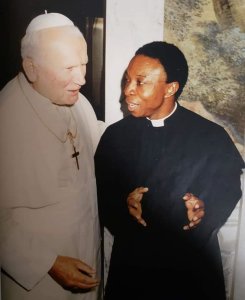
On a more positive note the deployment of the metaphysical arm of the family of the metaempirical Sciences serves aptly to correct and overtake, overpower and overthrow and eliminate and replace the magical and superstitious thinking or worldview that held the people back from progressing in the Middle Ages, while the deployment of the exact as the logico-mathematical arm serves aptly through its technical productivity to correct and overtake, that non productivity among the people which has led to the vicious circle of poverty, hunger and sickness among them that has reduced the dignity of man created by God in his own image and likeness as of the King, Creator Governor and Saviour of the universe.
Thus, by deploying, as he did, a certain member of meta-empirical family of the sciences to explain the supernatural truths of the Christian faith, we have an indissoluble intellectual affinity with Thomas who too deployed a certain member of the same family.
But the particular member we deploy is not the particular one he deploys.
For: while 1) himself in his days deployed that left arm of the family of metaempirical sciences which is the Metaphysical Sciences, comprising General Metaphysics and Special Metaphysics, otherwise called Ontology, to highlight the supernatural truths of the Christian faith for the humans in that medieval period that was replete with magical thinking, 2) ourselves today on the contrary rather deploy that right arm of the same family of the Metaempirical Sciences which is constituted by the Exact Sciences, comprising Logic (otherwise called the Science of comparative-analogically and argumentative-syllogistic reasoning) and Mathematics (which in turn comprises ‘Geometry as the Science of Structures, or of forms or shapes or circular and linear figures’, ‘Arithmetic as the Science of numbers, or of numerical strength that can be increased by addition and by multiplication, or be reduced or made to decrease by subtraction and by division’, and ‘Algebra as the Science of equations, or of the substitution with equivalents as with things that are equal in value, or the Science of equalities, or of equilibrium or balance, or of equity, equal distribution of forces, hence the Science of distributive justice as requisite for good government) to highlight for the humans in the contemporary period of globalization (that is fraught with a bad as the separatistic spirit in the midst of a good as the technico-productive Techno-scientific thinking) the same supernatural truths of the Christian faith as faith primarily in the divine Trinity, in the incarnate Word as Godman and n the Eucharistic Sacrament as in the three major supernatural truths in which God is adored as He desires and deserves to be.
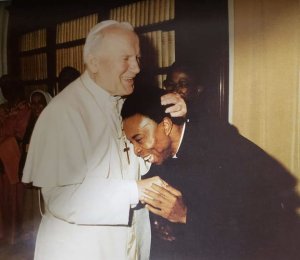
Thus our speculative theology cannot but be diverse from that of Thomas Aquinas from the point of view of the difference between the Metaphysical Sciences used by him for his time and the Exact Sciences used by us for our own time, and also from the point of view of the fact that both times are different from one another, even though the two diverse theologies at the same time cannot but be correlated and mutually complimentary as long as the two arms of the family of the Metaempirical Sciences are inseparable, in spite of their distinction, from one another. Besides Thomas though he does not use mathematics uses logic as well, and ourselves though we do not use General Metaphysics do use Ontology, namely Special Metaphysics, as well.
Therefore the unity and difference in the ars speculandi between Thomas and us will continue to exist as long as the theological speculation as we practice it today is – on the one hand, like Thomas did it – that reflection to which the Spirit of Truth spurs us on and which aims at the exploration of the interior of the supernatural realities (especially God, the triune God and His divine Trinity as the Most Holy Trinity, the incarnate Son of God as the Godman, the Blessed Eucharist as the Most Holy Sacrament of the salvific presence of God among men) as the proper objects of theological thinking; supernatural realities into the interiority of which the intellect gains access through speculative penetrations of the doctrines (as the taught supernatural, hence sacred, truths of faith) of the Church on such realities; penetrations effected through searching in mirrors (specula) in which the images (imagines) of the taught sacred truths of faith are reflected ; images as figures (figurae) and signs (signs) and, hence, as symbols (symbols), and in fact as symbols of some sacred reality, therefore as sacred symbols, hence as sacraments ( sacramenta), thus as mysteries (mysteria) – of the taught sacred truths of faith are reflected; mirrors (specula) that are not so much the empirical creatures of God (like the watermasse) or the metaphyisico-Metaempirical creatures of God (like the human soul) in which the images as mysteries are reflected, as all the more the exact-Metaempirical (i.e. mathematical and logical) creativities of man, especially the mathematical (i.e. geometrical, arithmetical and algebraic) symbols, that reflect the mysteries, whereby the Spirit-propelled penetration opens the gate and the eye to vast horizons for seeing and contemplating the fascinating mysterious interior: the contemplation of the transparent bosom of the Deep; the contemplation of the logicality, unity and power and beauty of the stable structures – as well as of the lively movements going on – inside each supernatural reality which account for (the stability of) logicality ever infallible unity, ever efficacious power and ever immutable beauty – as well as for (the dynamism of) the development, promotion and progress – of what that reality says and does, or of how that reality acts inwardly (ad intra) as well as outwardly (ad extra); a contemplation of the mysteries, especially the mysteries that are peculiar to that reality: a mystical contemplation from which the human spirit passes over smoothly to the irresistible adoration of the Lord and prayer to Him and friendship with Him as that Spirit-filled holy habit in which we indulge as our daily delight. (cf J.O. Egbulefu CCE, The Figure of Bishop Hilary Paul Odili Okeke, in: Maurice O. Izunwa and Michael Okonkwo, Long live Good Pastor, Onitsha 2013, pp 3-30, esp 9-20).
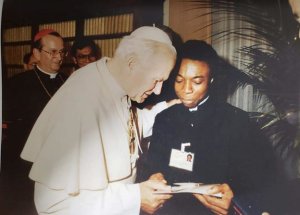
3) A typical meta-empirical creature of God that has been seen as a mirror in which the structure of God is reflected is the human soul; and it is here the difference between the mystical contemplation and theological speculation of St Thomas and St Augustine that take the soul as the mirror in which the contemplated image of God is reflected, on the one hand, and our own mystical contemplation and theological speculation which takes mathematical (arithmetical, algebraic and geometrical) figures as scientific symbols that recapture the structure of God to be the proper man-made mirror on the other hand begins to show itself.
We chose the divine-human structure not in the sense of the union of the eternal divine with a divinely created thing, as is the case in the order of the incarnation, but rather in the sense of the union of the eternal divine with a human invented thing, or the union of the divine operation with the human cooperation, or the union of penance as human action with forgiveness or pardon as divine reaction to effect reconciliation as fruit of interaction between God and Man, as is the case in the order is salvation of the individual, since the God who created us without us (without our presence and consent and contributions) does not want to save us without us (without our presence and consent and contribution): “Whoever believes and shall be baptized shall be saved” Mk 16:16.
4) Thus, for us, theological speculation and mystical contemplation should be done – the divine mystery should be contemplated -in a humanly invented technical mirror, thus in geometrical figures as scientific symbols – not in divinely created natural mirror, thus not in the soul, because whatever is (to be) received is (to be) received in the mode of the receiver and not of the received (cf. quidquid recipitur ad modum recipientis recipitur), – and particularly here lies the peculiarity and originality of our mystical contemplation and theological speculation and there, from resulting speculative theology.
Point 3c): Unlike in the theological thought of Father John Egbulefu there is No Technical Theology in Thomas Aquinas
1) Technical’ is the adjective from the noun ‘Techne’, meaning craftsmanship, skill, technique, the art of skillful production of material objects as goods, but the art of skillful production presupposes the know-how to produce, to invent, to fabricate material objects as goods. But having the knowledge of how to produce, in turn presupposes the capacity to imitate the Creator who is the origin of all creatures and whose creativity is the origin and source of, and model for, the creativity of creature. But the creativity of creatures is in turn the source of their productivity. Therefore, the Creator is the ultimate origin and source of ‘Techne’ and the creativity and hence productivity of the Creator is the ultimate origin and source of, and ultimate model for, the creativity and hence productivity of the creatures.
2) Technical Theology is that Theology the object of which is God the Creator as the ultimate origin and source of ‘Techne’ and the ultimate origin and source of, and ultimate model for, the creativity and, hence, productivity, of the creatures as of those beings that God (Theos) has called into existence with His eternal Word (Logos).
2a) To be the origin and source (origo et fons) of a being is to be ‘the author’ and ‘the font of the power’ of that being, and therefore, and only so, to have authority and power over that being. For no one has authority and power over a being that the one has not authored; one has authority and power only over a being that the one has authored.
2b) The God whose creativity and, hence, productivity is the origin of the creativity and hence productivity of the creatures is God as that living and, hence (since all living beings reproduce themselves), that self-reproducing Being that does not depend on another being for it to be there, for it to be in existence, as long as He is the God that is the only one Being that is “the first and the last” Being. For He is the First and the Last besides whom there is no other God (cf Is 44: 6); but, by being the only one that is the First, He has no being before Him and, thus, did not originate from another being, but is rather the origin of every other being than Himself, He did not, and eternally does not, depend on another being for Him to be there, for Him to exist, for Him to be a living Being, hence for Him to reproduce Himself. He is thus called the Absolute Being and thus acts absolutely. Therefore, He exists by Himself, lives by Himself and thus reproduces Himself by Himself. Mathematically expressed: God multiplies Himself by Himself. The fruit of God’s self-reproduction is thus identical with the product of God’s multiplication of Himself by Himself. But God’s multiplication of Himself by Himself is His primary creativity and hence productivity in His act of living, and He lives eternally, lives without having a beginning and without having an end. He has no beginning as long as He, being the only First, and thus having no being before Him on which He depends for His existence, does not originate from another than Himself, and is rather the origin of the existence and hence of the life of every other being than Himself, He is the Being from whom every other being depends for its existence and hence for its life. And He has no end as long as He, being the only Last, and thus having no being after Him to which He tends for His fullness and fulfilment, is the fullness and fulfilment itself in person to whom every other being than Himself tends for its fullness and fulfilment, He is the source of the fullness and of the fulfilment and, hence, of the fulfilled existence and (since to live presuppose to be there , to exist, and to be there in turn presupposes to be at all. – in other words: life presupposes existence, while existence in turn presupposes essence), therefore, of the fulfilled existence and, hence, of the life, of any other being than Himself.
The God whose creativity and hence productivity is the source of the creativity and, hence, productivity of the creatures is God as Light, eternal Light. Light is creative as long as Light is Light only in so far as it shines, and shines by emitting rays that travel from their common source into all directions upwards, downwards, rightwards, leftwards, forwards and backwards contemporaneously to strike objects that are lying or sitting or standing outside the Light, and the rays travel in bundles and in straight lines, not in curves, and in each of the directions into which they travel they travel with great and irresistible and hence constant speed and are unbendable till they have struck the external object at which they are cast and only after their striking of it they can diverge to another external object after the striking of which they quickly travel back to their common source, with the consequence that in each of the direction they travel from their source the rays make a dialogical movement, or contemporaneous movements, of going from their common source to their respective direction and objects and coming from the struck object back to their common source. And Light is productive in so far as it, through its essential activity of shinning, gives illumination to the surroundings of the source of its splendid rays, and in so far as the rays, through their stroke on the objects existing outside the Light, gives to these external objects first warmth, then heat, then fire. The productivity of Light has thus the structure of the Trinity as of the unity resulting from the union of three distinct realities of the same nature (and to these three correspond the warmth and heat and fire as the three distinct, in the intensity ever more increasing, things that the rays, through their stroke on the external objects, give to the struck objects) with another numerically only one, reality that is of a nature contrary – opposite but not opposed – to the common nature of those other three realities (and to this one other reality but of a nature contrary to that of the other three corresponds the illumination which the rays give to the surroundings of their common source).
As long as God is Light, but the productivity of light has the structure of a Trinity, it follows that the God who through His multiplication of Himself by Himself (the product of which multiplication can, as long as God is numerically one, only be one, since one multiplied by one is always one) is productive, has a Trinitarian structure. The inevitability of the Trinitarian structure of God results also from the fact that 1) as long as 1a) the rays that travel upwards and those that travel downwards from the common source of the rays unite together to form a vertical line as the shortest distance between the two points that are the external object existing above and the one existing under the common source of the rays, whereby at the midpoint of this vertical line lies the source of the rays, and 1b) the rays that travel rightwards and those that travel leftwards from the common source of the rays unite together to form a horizontal line as the shortest distance between the two points that are the external object existing at the left and the one existing at the right of the source of the rays, whereby at the midpoint of this horizontal line lies the source of the rays, and 1c) the rays that travel forwards and those that travel backwards from the common source of the rays unite together to form an oblique line as the shortest distance between the two points that are the external object existing in front of the source and the one existing at the back of the same source of the rays, whereby at the midpoint of this oblique line lies again the source of the rays, but 2) the three distinct – vertical, horizontal, oblique – lines have one common midpoint as what unites them with one another and inseparably from one another, but 3) the structure of the Trinity consists in the unity resulting from the union of three distinct realities of the same nature (and to these three correspond the vertical and the horizontal and the oblique lines as the three distinct, lines that result from the union of the upward with the downward, the rightward with the leftward, the forwards with the backwards moving rays, respectively) with another numerically only one, reality that is of a nature contrary – opposite but not opposed – to the common nature of the three lines as lines (and to this one other reality but of a nature contrary to that of the three lines as line corresponds the one and common midpoint of the three lines as a point and hence as a being contrary – opposite but not opposed – to line), it follows that God as Light that shines and emits rays and the creativity of whom stretches from ‘the travelling of the emitted rays into all directions contemporaneously and their making in each direction the contemporaneous movements of going from their common source to external objects and coming back from the external objects to the same common source as to their original point of departure, their converging at their original point of divergence, such that the union of every two of the six directions that are contrary – opposite but not opposed – to one another gives rise to three distinct (namely vertical, horizontal, oblique) lines that are united by their one common midpoint, has a Trinitarian structure.
2c) The method of Technical Theology stretches from 1) the mathematization (hence the arithmetization, geometrization, and algebrization) of the divinely revealed, magisterially taught, humanly believed supernatural truths of the Christian Religion – concerning the origination of the Son of God as the fruit of the living God’s reproduction of Himself, or as the product of God’s multiplication of Himself by Himself , as the image generated from the one and indivisible substance of God by God as Light through His casting His rays on Himself, on His innermost Self, on His very substance , as well as the origination of the Holy Spirit through His procession from the Father and the Son together, into arithmetical and geometrical and algebraical symbols, 2) the deduction of laws -not only those that regulate the stable relationship among the various components of the mathematical (arithmetical, or geometrical , or algebraical) symbols, but also those that regulate the perfect movement that can be made within the geometrical symbols and that reflect or recapture or represent the dynamic processes that are going on within the mathematical figure , through 3) the technical invention or fabrication of static objects that are similar in structure and function to certain living, hence moving, to 4) the application of the laws of stability.
A further difference, in spite of similarity, between Thomas Aquinas and us in theological thinking.
Father John Egbulefu began his teaching ministry in Rome at the end of his thirties (1989), and dedicated the whole of his forties (1990-1999) to the teaching of Dogmatic Theology of the Sacraments at the Pontifical Urbanian University, Vatican City. During that period, he published more than twenty theological writings, the twentieth of which in their chronological order was the article “The glorification of God by Man. A dogmatic reflection, in: ENCOUNTER. A Journal of African Life and Religion, Vol 5, Rome 1998/99, pp 9-25.
That article betrayed more than any of the rest of his writings in that first decade of his teaching ministry the then stand of the development of his pattern of theological reasoning, which at that time was one that stretched from Dispositio to Positio to Expositio to Oppositio to Transpositio to Propositio and closed with the all-synthesizing Conclusio. But in his fifties, the Expositio was replaced and his pattern of thought changed lightly but significantly through a meanwhile acquired clearer understanding of the structure of the history of salvation to which the structure of truly Christian theological thinking should be conformed in order to be adequate.
For, Father John Egbulefu drew consequences from two instructions that brought about the change:
1) On the one hand, according to instruction given by the Second Vatican Council in her Decree for the formation of priests (Optatam Totius), the revealed truths of the Christian faith are to be reflected and transmitted within the frame of the History of Salvation (Op. Totius n. 16). The history of salvation as a thing exists both in the form of an object and in the form of an event and thus embraces the origin and the development of salvation. As an event it is that history of victory which was made by the almighty living God over His adversary through His incarnate Son Jesus Christ in the broad daylight that the Holy Spirit is, a history the requisite for which is recaptured by the history of Israel in the Old Testament, and the occurrence of which is concretized by the history of Jesus Christ in the New Testament, and the consequences of which are articulated by the history of the Church as of the new people of God in her devotional, doctrinal and disciplinary Tradition as she moves devotionally on earthly pilgrimage towards God in heaven, moves doctrinally on evangelizing mission to the peoples of all the nations on earth and stands disciplinarily firm on observing all the Commands of God and of Christ in whom she trusts. As an object it is epitomized, synthesized, concretized in the person and words and acts, actions, activities, and works of Christ who not only is the incarnate Word as the Truth itself in person in whom all the revealed truths of the Christian faith as the proximate object of scientific theological thinking have their Prototype (like the shadows of a reality have that reality as their Prototype or Archetype) but also is inseparable from the triune God who, both from the point of view of how He is in Himself and has ever been even before His creating the world and of how He is related to other beings than Himself beginning from being their Creator through His becoming Man for humans and for the sake of their salvation, to being their Saviour, is the remote object of scientific theological thinking.
On the other hand, according to the general law of all the sciences, the structure of the means must correspond to, or be conformed or adapted to, the structure of the object of thought or of pursuit, if the means wants to capture, take hold of the whole of, comprehend, that object and, only so, to be an adequate means. And it is this widened and deepened understanding of the History of Salvation from which I derived the components of my above mentioned historico-salvifically inspired new pattern of scientific theological thinking under the center of gravity of which a further and clearer difference of my theological thinking from that of the rather more philosophically inspired Thomas Aquinas is registered.
For, unlike the six-step method of ‘Disputatio’ used by Thomas Aquinas in Theology: 1) Positio, 2) Oppositio Positionis, 3) Justificatio Positionis, 4) Fundatio Positionis seu Determinatio, 5) Responsum cum Refutatione oppositionis, 6) Redactio et multiplicatio et distributio thesis ], Father John Egbulefu uses a five-step method of Sermo that he has derived from those five stages of the earthly half of the history of salvation which stretch from: 1) Formatio deformabilis and 2) Informatio Formati, through 3) Deformatio Formati et Informationis, and 4) Reformatio Deformati, to 5) Transformatio Reformati per Conformationem Reformati ad Criterium et Exemplum divinum-humanum.
The five steps of the process of his systematic-theological thinking (as method of his ‘Sermo’ on the truth of the word of God as object of magisterial teaching on faith and morals) which have been deduced by me from the above named five stages of the earthly half of the history of salvation are the following:
1) Dispositio (the Disposition; cf. Formatio deformabilis; the formation of deformable image of God by God – a formation otherwise called the Creation of the living human being as the giving of form to matter);
2) Positio (the position taken by God over realities as persons or things about whom and which He wants to inform Man whom He has formed – made, created – in His image; cf. Informatio Formati, the information given by God to Man whom He has formed in the image and resemblance of His divine self – an information otherwise called the Revelation as God’s making known to the creature Man both Himself as the Creator and His purpose of creating the living human being or of His divine intention for calling the human being into existence on earth, God’s making known to man who and how He is and what He does – according to His words to Man about Himself and about His operations, operationes, comprising His works, opera, and actions, actiones);
3) Oppositio positionis (the opposition of the position; cf. Deformatio Formati et informationis, the deformation of the formed image of God in Man and of the information given originally by God to Man – otherwise called the distortion of the image of God in man through the wounds sustained on earth by man by his falling into the traps set and the ditches dug for him by the flattering and deceiving and seducing Devil and the demons during man’s journey on earth to the calling and inviting God in Heaven);
4) Depositio et Repositio oppositionis (the deposition and reposition of the opposition, cf. the Reformatio Deformati, the reformation of the deformed image of God in man and of the original information divinely given to man about God – a reformation otherwise called the redemption of the fallen and dying humanity stretching from the liberation of man by Christ from the ditch dug for him by the devil and from the traps set for him by the demons into which he has fallen on his way to the calling and inviting God, the healing of man from the bruises and lacerations as from the wounds of the flesh and from the dislocations and fractures as from the wounds of the bones that he had sustained through the fall, thirdly to the putting anew of the healed man onto the right way to God that he was going before the devil seduced him from it, and fourthly the sending of the Holy Spirit to lead him safely to the end on the way to God ) ;
5) Transpositio et Repropositio positionis (the transposition and reproposition of the reformed deformed position,, cf. Transformatio Reformati per Conformationem ad Criterium et Exemplum divinum-humanum, the transformation of the reformed image of God in man through the conformation of it to the divine-human structure, moral stature, spiritual figure of the comprehensively loving and gentle and humble Christ as the Criterion and Model of authentic perfection and of the authentically perfect Man as One who is as perfect as the Heavenly Father is perfect – otherwise called the Perfection by the Holy Spirit of those redeemed by Christ, for the work of the Holy Spirit is to bring to perfection the salvation of humans that has come as gift from the Father through the Son in the broad day Light that the Holy Spirit is).
Researched by Nchumbonga George Lekelefac, B. Phil., (Mexico); S.T.B., (Rome); J.C.L/M.C.L., (Ottawa), Diploma in English, French, Spanish, Italian, Portuguese, German, Dutch; International Language Tutor of English, French, Spanish, Italian, Portuguese, and German; Doctorandus, University of Münster, Germany; Europe/ US Correspondent of “The Herald Tribune Newspaper” and “The Sun Newspaper”; Independent Ecclesiastical Journalist; Canon Lawyer and Researcher; Founder/ CEO of the “Nchumbonga Lekelefac Institute of Research, Documentation, Language and Culture, USA. Email: nchumbong@yahoo.com